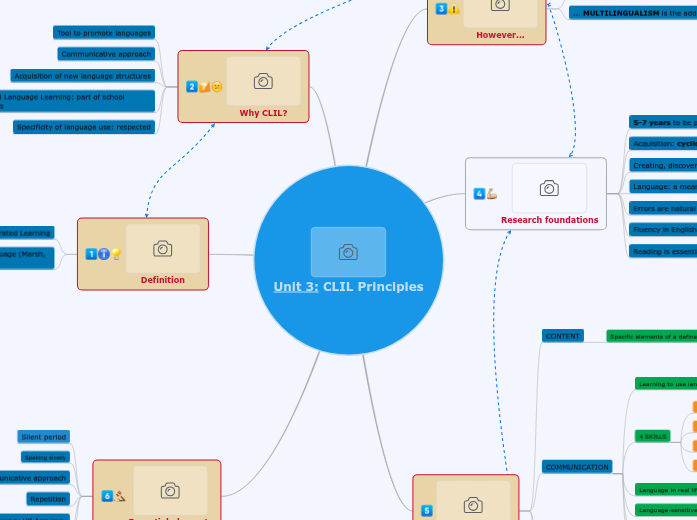
Unit 3: CLIL Principles

However...
... the major concern is EDUCATION
... MULTILINGUALISM is the added value

Research foundations
5-7 years to be proficient in English
Acquisition: cyclical process, not linear
Creating, discovering and constructing meanings
Language: a means, not an end
Errors are natural
Fluency in English by using English
Reading is essential

The 4 Cs
CONTENT
Specific elements of a defined curriculum
Through different perspectives
Accessing lenguage terminology
Preparing for the future (studies and work)
COMMUNICATION
Learning to use lenguage...
... whilst learning to use lenguage
4 SKILLS
READING
WRITING
LISTENING
SPEAKING
Language in real life situations
Language-sensitive curriculum
Plurilingual interests and attitudes
Interest in further study of a target language
COGNITION
Thinking skills: concept formation, understanding, language
Individual learning styles
Methods and forms of classroom practice
Learner motivation
CULTURE
Exposure to alternative perspectives and share understandings
Intercultural knowledge and undertanding
Intercultural communication skills
Specific neighbouring countries, regions or minority groups
Wider cultural context

Why CLIL?
Tool to promote languages
Communicative approach
Acquisition of new language structures
Second Language Learning: part of school settings
Specificity of language use: respected

Definition
Content and Language Integrated Learning
Example: Social Sciences English Integrated Learning
Teaching THROUGH a foreign language (Marsh, David, 1994)

Essential elements
Silent period
Speking slowly
Communicative approach
Repetition
Fluency VS Accuracy
Etc.
